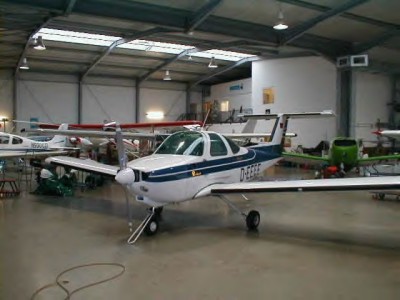|
|
|

Beech Skipper history, performance and specifications
|
 |


Beech flew the
prototype model 77 as the PD285, with a low-set
tailplane, on February 6, 1975, but it was not until
September 1978 that production of the prototype
flew. This comparatively long gestation period
enabled Piper to announce the rival tomahawk in
November-October 1977, and began customer deliveries
early the following year. It was not until April
1979 that the Model 77 Skipper began production
lines, by which time the design had been modified to
incorporate a T-tail.
By the beginning of 1961, about 12 a month were
being built and around 200 had been delivered; by
comparison Piper had delivered 1000 Tomahawks in the
first year of production, 220 in 1980, and
established a rate of 20 a month by early 1981.
The Skipper was designed as a primary trainer for
beach Aero Centres, with low initial and operating
costs, while simplicity of maintenance was
emphasized. Its wing had a high-lift aerofoil
developed by NASA, and an unusual feature was the
use of torque tubes, in place of cables and pulleys,
to activate the flaps and ailerons. Power plant
consists of a 115-hp Avco Lycoming O-235-L2C.
Performance
Horse power: 115
Cruise speed: 97 kts
Top speed: 106 kts
Stall speed (dirty): 47 kts
Empty Mass: 1103 lbs
Gross Mass: 1675 lbs
Fuel: 29 gal
Range: 370 nm
Service ceiling: 12900 ft
Rate of climb: 720 fpm
Takeoff
Ground roll: 780 ft
Over 50 feet obstacle: 1280 ft
Landing
Ground roll: 670 ft
Over 50 feet obstacle: 1313 ft |
|
